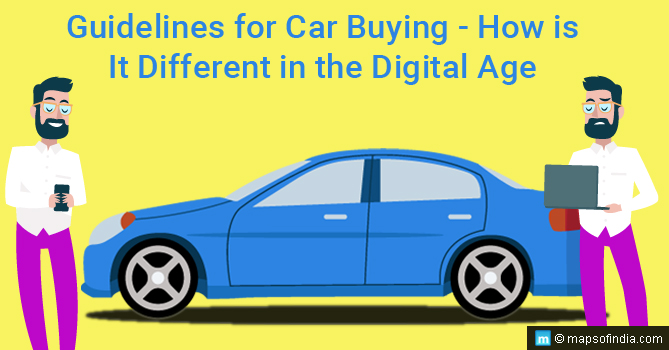
Buying a new car is a challenging process for those who need to be absolutely sure about what they want to bring home. Numerous factors and preferences combine to create an optimized checklist for bringing home the so called perfect automobile. Thanks to the numerous car deal aggregators on the digital market with their platforms and specification lists of almost every model and variant available for sale, modern buyers have been saved the extra amount of research work earlier required. However, this has also caused an information overload problem for those majorly dependent on the digital way of life and the new challenge is to identify valid and authentic sources of information since there’s literally a lot of people saying a lot of many different things about almost everything on the internet. Having filtered cross referenced results and the right information makes this process a lot easier compared to browsing through all that data site to site.
Size and Segment
The first step is finalizing the segment of choice, based on your daily driving routine, the kind of terrain and distance you cover and the traffic and road conditions. Understand that figuring out this aspect of being a car customer is the most important of all since ending up with a car segment that does not optimize your daily work commute needs with those of your holiday or getaway plans can prove to be a huge disappointment. Unlike in the wizarding world brought to life by Rowling, where the wand chooses the wizard, in our case, we have to choose the car that despite similarities among genres and their models, beats all other contenders not just buy its visual appeal, but also by its potential to adhere to and if possible, enhance our lifestyle. To decide that one must figure out the key parameters of utmost importance to them and their expectation from the car they’re looking to buy. Make sure you have the right segment and segment category before proceeding further.
Performance and Efficiency
Once you’ve found your segment, you need to understand the power and performance output requirements of your daily commute and those of your getaways. Most passenger cars are powered by Internal combustion engines with three to four in line cylinders with a fair power output and basic 15-20 km pl of fuel efficiency. High performance cars come with six, eight, ten and twelve cylinder options with enormous power outputs transmitted through some sophisticated gear arrangements either manual or automatic. Fuel efficiency is much lower on such vehicles and they’re much costlier than your every day passenger segment offerings.
Safety Features
Also very important is vehicle safety and stability, and though most new car models come equipped with all standard safety features such as Anti locking brake systems (ABS), Electronic stability programs (ESP), Ride control, Hill holding devices, driver and passenger airbags, fuel cut-off systems, and others, it is equally important to thoroughly test drive a car and get a very clear impression of the coordination between its mechanical and sensor based systems. Overall drive quality, road holding, suspension and stabilization while cornering at high speeds, steering stability and response, vehicle body rollover capacity are some of the parameters one must check in order to be sure how safe and stable their vehicle choice is.
User Experience
Next come the nitty gritties – the interior feel and the user experience, air conditioning, infotainment, access to controls and the ease of interface are some of the popular UX parameters that customers look at while buying cars nowadays. Most passenger car models – even hatchbacks and entry level sedans and suvs in the sub ten lakh range, come equipped with touchscreen internet enabled infotainment interface, steering mounted controls, comfortable seating and surround sound for music. Comfort features that include breathing leather or similar fabric seats, illuminated controls and mood lighting, tilt sliding seats for front passengers, rear cooling vents, climate control, bluetooth enabled dialling and plenty of others are being sold as standard by most manufacturers in their entry level and mid segment passenger vehicles.
Pricing
The last but definitely not the least important factor is the pricing. Often cars that are very well placed in their segment and come with a load of exciting features and high potential for positive user experience, fail because of their pricing. It is rare that cars with the best drive quality, features and customer satisfaction potential come cheap, but with proper research on pricing, discounts, exchange options and special offers available on festivals and other occasions, one can very well bring in the car of their choice at surprising rates.
Conclusion
All said and done, it takes a lot of patience, knowledge acquisition in the form of information and experienced advice and awareness of market trends, manufacturer credibility, models on offer and the price options they come with in order to make the optimum choice. It is only fitting since a car is one of the biggest investments that a person makes in their life and it takes a significant amount out of their pockets to bring home the car of their choice, that the investment be made after a lot of careful thought and planning.





